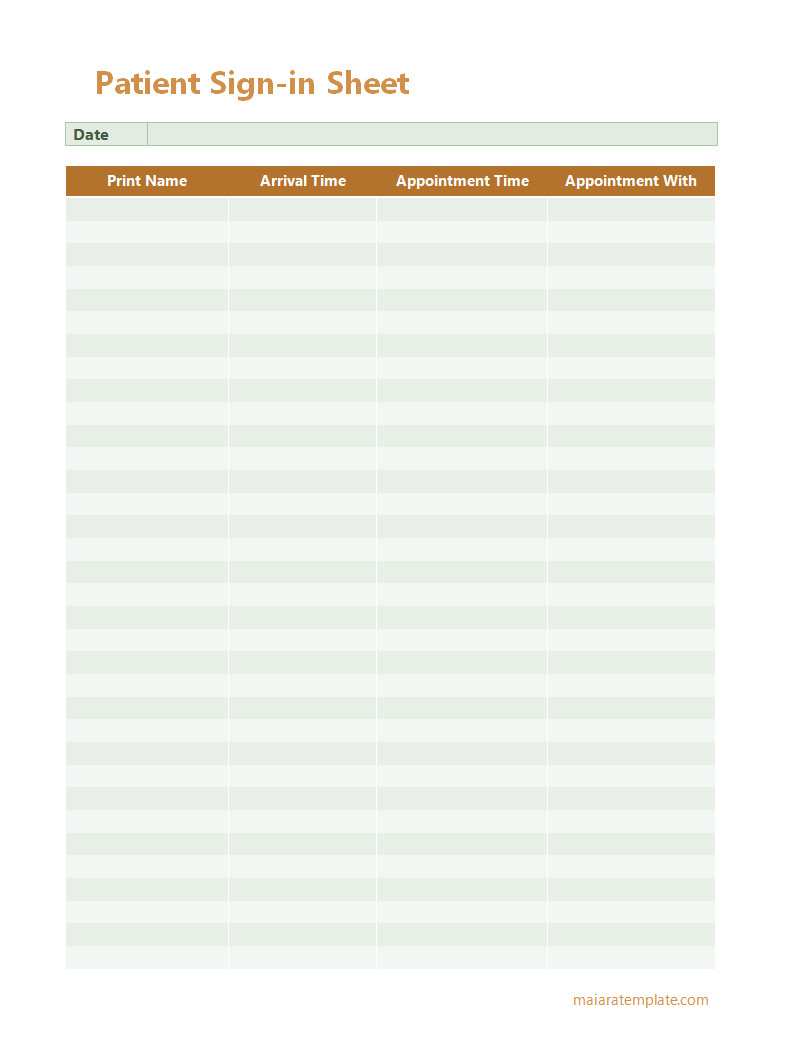When you visit a medical practice, one of the first things you often encounter is a patient sign-in sheet. This simple document is used to record patients’ arrival times and other pertinent information. While it may seem like a mundane administrative task, the patient sign-in sheet serves an important purpose in medical practices.
This article will explore what a patient sign-in sheet is, why it is useful for medical practitioners, how to write one effectively, and tips for optimizing its use.
What is a Patient Sign-In Sheet?
A patient sign-in sheet is a document used in medical practices to record the arrival time of patients and gather other relevant information. It typically includes fields for patients to write their names, appointment times, and any additional information the practice may require. Some sign-in sheets also have sections for patients to indicate their reason for the visit or any specific concerns they may have.
The sign-in sheet is usually located at the front desk or reception area of a medical practice, where patients can easily access it upon arrival. It serves as a way to streamline the check-in process and ensure that patients are seen in the order of their arrival.

Why is This Form Useful For Medical Practitioners?
The patient sign-in sheet offers several benefits for medical practitioners:
- Efficient Check-In Process: By having patients sign in upon arrival, medical practices can efficiently manage the flow of patients. This helps prevent long wait times and ensures that patients are seen on time.
- Accurate Record-Keeping: The sign-in sheet provides a record of patients’ arrival times, which can be useful for tracking patient flow and identifying any delays or bottlenecks in the scheduling process.
- Improved Communication: Patients can use the sign-in sheet to communicate any specific concerns or reasons for their visit. This information can be helpful for medical practitioners to better understand patients’ needs and provide appropriate care.
- Legal Documentation: In some cases, the sign-in sheet may serve as a legal document, especially in situations where patients are required to acknowledge certain policies or consent forms.
How to Write a Patient Sign-In Sheet
When writing a patient sign-in sheet, it’s important to include the necessary fields and information to ensure an efficient check-in process. Here are some tips:
- Basic Patient Information: Include fields for patients to write their full names, contact numbers, and appointment times.
- Reason for Visit: If relevant, provide a section for patients to indicate their reason for the visit or any specific concerns they may have.
- Consent or Policy Acknowledgment: If required, include a section for patients to acknowledge any consent forms or practice policies.
- Additional Information: Depending on the specific needs of the medical practice, include any additional fields for gathering necessary information, such as insurance details or referral sources.
- Date and Time: Include fields for patients to write the date and time of their arrival.
Tips for Optimizing a Patient Sign-In Sheet
To make the most of a patient sign-in sheet, consider the following tips:
- Clear Instructions: Ensure that patients understand how to fill out the sign-in sheet by providing clear instructions. Use simple language and consider using visual cues, such as arrows or checkboxes, to guide patients.
- Privacy Considerations: Protect patients’ privacy by providing a discreet area for them to write their personal information. Consider using a separate sheet or cover to prevent other patients from seeing sensitive details.
- Regular Updates: Review and update the sign-in sheet regularly to ensure it captures all the necessary information and aligns with any changes in the practice’s policies or procedures.
- Accessible Placement: Position the sign-in sheet in a visible and easily accessible location, such as the front desk or reception area.
- Electronic Options: Consider using electronic sign-in systems or online platforms to streamline the check-in process and reduce paper waste.
- Secure Storage: Once the sign-in sheet is filled out, ensure it is stored securely to protect the patient’s confidential information.
- Feedback Collection: Use the sign-in sheet as an opportunity to gather feedback from patients by including a section for comments or suggestions.
Conclusion
The patient sign-in sheet is a valuable tool in medical practices, facilitating an efficient check-in process, improving communication, and providing accurate record-keeping.
By following the tips outlined in this article, medical practitioners can optimize the use of patient sign-in sheets and enhance the overall patient experience.
Patient Sign-in Sheet Template – Word
- Customizable Restaurant Menu Template (Word) - December 22, 2024
- Customizable Sushi Menu Template (Word) - December 19, 2024
- Free Editable Job Description Template (Word) - December 15, 2024